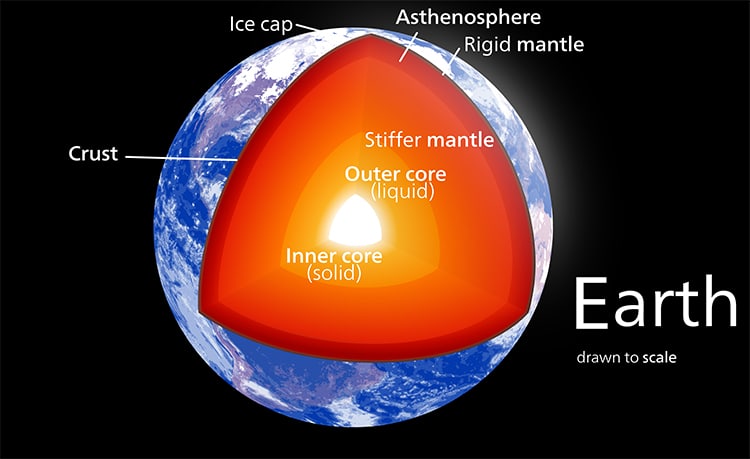
Photo: VAMPY1/Depositphotos
The Earth spins around an axis that is roughly vertical, and as it spins, we move through day and night. When the seasons change, the angle of the axis also moves. But occasionally, something strange can be observed. Some days are ever so slightly longer or shorter than others. Similarly, tracking the motion of Earth’s pole, scientists have long observed slight shifts in its location once every 8.5 years. A new paper in Nature Communications finds these deviations are due to what is called an inner core wobble. This finding sheds light on the inner workings of our planet.
The researchers behind the study—under Hao Ding of Wuhan University—tracked the polar rotation, meaning the shifting of where the polar axis is. They completed this work in 2019, and then built upon it for the next paper by analyzing day lengths. These indicate a 0.17 degree misalignment between the axis of the core and that of the mantle (and crust above). This may come from the differences between the inner and outer core. The former is solid, the latter liquid. Since the tilt is westwards, it also suggests that the northwestern portion of the core is densest.
“In summary, based on the Earth’s rotation observations (PM and ΔLOD), we experimentally confirmed for the first time that the 8.5 yr signal is the ICW,” the paper concludes. This scientific wobble may seem insignificant to us on Earth’s crust, but understanding what is within the Earth is critical to studying magnetic fields, space, and our planet’s history. What was once a homogenous mass of molten rock is now a complex and multi-layered phenomenon. There may be similar planets in the universe, and understanding Earth is essential to this exploration.
Earth’s inner core is not stable, and new research suggests it shifts periodically in a “wobble” around its axis.

Earth’s layers. (Photo: Kelvinsong via Wikimedia Commons, CC BY-SA 3.0 DEED)
h/t: [Space]
Related Articles:
Halley’s Comet Has Begun Its 38-Year Journey Back Toward Earth
Scientists Discover Water Ice Deposits on Mars That Are More Than 2 Miles Thick
Japan Becomes Fifth Country to Successfully Land on the Moon
